Iranian Painting: The Harmonious Melody of Color and Design on a White Canvas
Painting, as one of the most important artistic branches shaping the visual arts in Iran, has a long-standing history and encompasses a wide range of works from the prehistoric and cave-dwelling periods to contemporary times, each featuring diverse forms, techniques, and themes. Iranian paintings in the prehistoric era were primarily imbued with religious and decorative functions; however, over time, other themes such as epic, mystical, ethical, romantic, and religious subjects also found their way into artists’ works. The earliest historical period in which traces of Iranian painting can be identified is the Neolithic era. This long period was marked by the rise and fall of various civilizations. The surviving paintings from this era hold significant historical importance. For example, the rock carvings found in Kuhdasht, Lorestan Province, are among the oldest known visual artworks from the Neolithic period, depicting scenes of humans hunting animals in a simple and rudimentary manner. Other discoveries, such as rock paintings, decorated pottery, bronze objects, and engraved seals from various regions of Iran—including Lorestan, Shush, Tape Sialk in Kashan, and Tape Hesar in Damghan—provide further evidence of paintings created during this crucial historical period. Geometric, animal, and human motifs, alongside representations of mountains, water, the sun, the moon, and other elements—depicted in a simple manner using very basic lines—constitute some of the most common visual motifs employed in ancient Iranian painting.
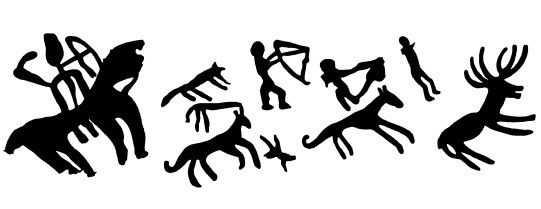
Rock Painting / Hunting with Bow and Arrow, Kuhdasht, Lorestan, circa 8000 BCE
On the other hand, in some surviving works from this period, hybrid motifs combining humans and animals can be seen, reflecting mythological aspects.
Different Periods of Painting in Iran
The art of painting in Iran, according to a widely accepted and reputable classification, encompasses five distinct historical periods. In the following section, each of these historical periods is described concisely.
a) Ancient Period
As previously mentioned, the origins of painting in Iran can be traced back to the ancient period. The millennia-long process of combining West Asian visual traditions ultimately manifested in the distinct Iranian style of the Achaemenid era. This style remained largely hidden under the influence of Hellenistic trends for several centuries but reemerged during the Sassanian period, acquiring new characteristics shaped by the social and cultural conditions of the time. Meanwhile, the Parthians, drawing on older Iranian and Eastern traditions, expressed their identity through a hybrid artistic approach. Central Asia, on the other hand, developed its own artistic patterns by integrating Iranian, Indian, and Chinese traditions. Subsequently, the Sassanian and Central Asian artistic heritage transitioned into the Islamic period, leaving a profound impact on Iranian visual art up to the Seljuk era. The Mongol domination of Iran marked the end of this trajectory.
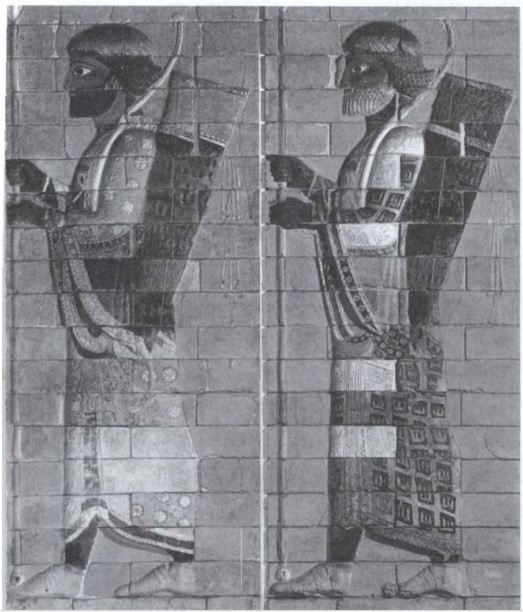
Polychrome Relief / Spear-Bearing Guardians, Shush, Achaemenid Era
B) Medieval Period
The Mongol domination of Iran marked a turning point in the history of painting in the region. From the late 7th century AH onward, a new process of adaptation and innovation began. Iranian painting experienced significant growth during the 8th to 10th centuries AH, but eventually stagnated in the 11th century. During these four centuries, dynasties such as the Mongols, Injuids, Muzaffarids, Timurids, Turkmens, Uzbeks, and Safavids ruled parts of Greater Iran, and it was primarily in their royal workshops that painters were engaged in book illustration. With the rise of manuscript painting in the courts, the social function of painting became somewhat limited; however, the range of themes and artistic expression expanded significantly.
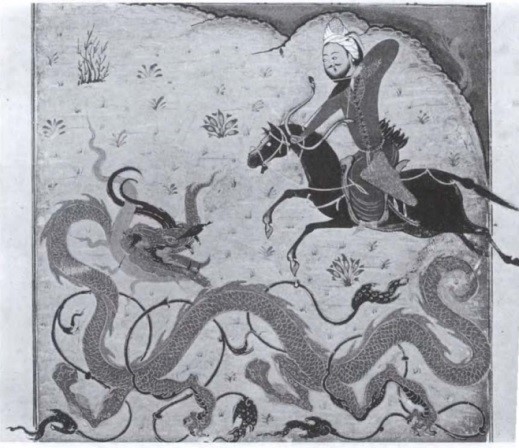
An Artwork from the Medieval Period / Shahnameh: Bahram Gur’s Battle with the Dragon, 772 AH
C) Modern Period
By the 11th century AH, Isfahan, with its majestic appearance, dense population, and unprecedented economic prosperity, had become a hub for merchants, travelers, political ambassadors, religious missionaries, and foreign artists. In this context, Iranian painting came under the influence of European painting, giving rise to a new era in the country’s artistic history. This modern period lasted until the late 13th century AH. During this time, while imperfect imitations of European naturalistic painting appeared, some Iranian painters also sought to harmonize Eastern and Western visual traditions. Consequently, Iranian painting in this period became a field of interaction and tension between Iranian and European elements, with European elements eventually prevailing over the traditional Iranian ones.
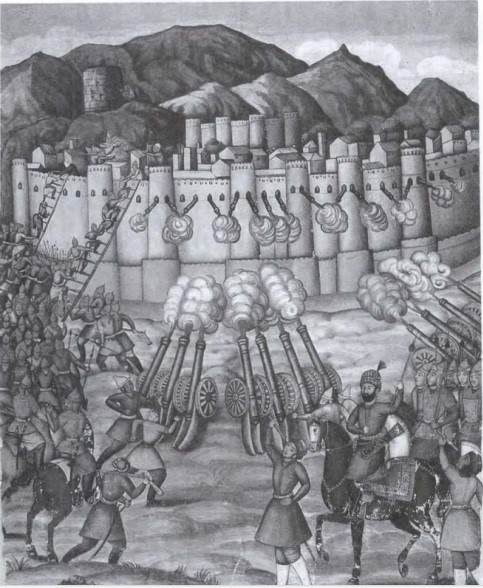
A work from the Modern Period / Jahan-gosha-ye Naderi: Nader’s Battle with the Afghans, circa 1170 AH
d) Contemporary Period
With the onset of the Constitutional Revolution and the resulting social and cultural changes, a new chapter opened in the history of Iranian painting. The wave of modernism that emerged from the Constitutional Movement transformed the realm of literature, and consequently, changes in painting became inevitable. Perhaps Kamal-ol-Molk, as the last prominent court painter of the Qajar era, was more preoccupied with modernization than other painters of his time. After his study trip to Europe, he founded the School of Fine Arts (Madrese-ye Sanaye Mostazrafe) with the aim of reforming and advancing Iranian painting. Alongside the establishment of this school, the centuries-old tradition of art apprenticeship and professional activity in court and non-court workshops declined, yet this did not bring about a significant qualitative change in Iranian painting. In this way, the School of Fine Arts formalized a partial adoption of Western art education. New forms of this process can later be observed in the Faculty of Fine Arts and the Faculty of Decorative Arts. During this period, Iranian painting was strongly influenced by the modernization policies of the Pahlavi era. The contradictory approach of simultaneously emulating Western models and attempting to revive Iran’s past glories prevented painting from following a natural course aligned with the internal conditions of society. Overall, in the contemporary period, four parallel currents can be identified in Iranian painting: academic painting, traditional miniature painting, modernist painting, and contemporary experimental painting. modernized miniature painting (new Iranian miniature), coffeehouse painting, and avant-garde painting.
.
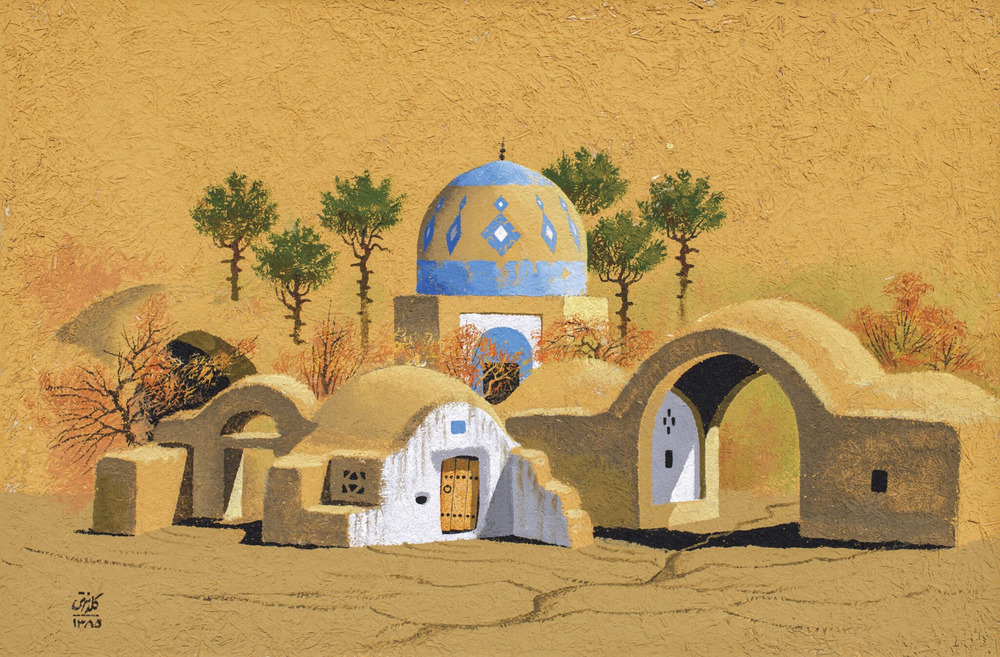
Untitled / Parviz Kalantari, Adobe and Oil on Canvas, 2006 (1385 SH)
f) Islamic Revolution Period
The art of the Islamic Revolution constitutes a coherent artistic movement, officially beginning with the glorious Islamic Revolution of 1979 (1357 SH). Painting became a significant part of this movement. Following the revolution, a group of young artists adopted political and social approaches to create realistic paintings, later termed “Revolutionary Painting.” The first tangible manifestation of this movement occurred in the early post-revolution period with an exhibition held at Hosseiniyeh Ershad in Tehran. The participating artists strived to move painting beyond restrictive intellectual and elitist limits, expanding its reach and expressive potential, which merely adorned gallery walls, and transform it into an effective medium for communicating with and influencing the public.
Furthermore, the imposed war (Iran-Iraq War) and the eight-year period of the Sacred Defense provided new opportunities for revolutionary artists to flourish, resulting in the creation of diverse work related to the Sacred Defense (Iran-Iraq War), sacrifice, jihad, martyrdom, and resistance. Painting during the Islamic Revolution, relying on profound religious and revolutionary values as well as the monotheistic worldview of the artists, emerged as a dominant and flourishing artistic current. The most prominent features of revolutionary painting, in terms of themes and subject matter, include the depiction of religious concepts, revolutionary struggles of the people, and the bravery of soldiers during the Sacred Defense, although other lofty themes are also present in the artworks of artists from this period.
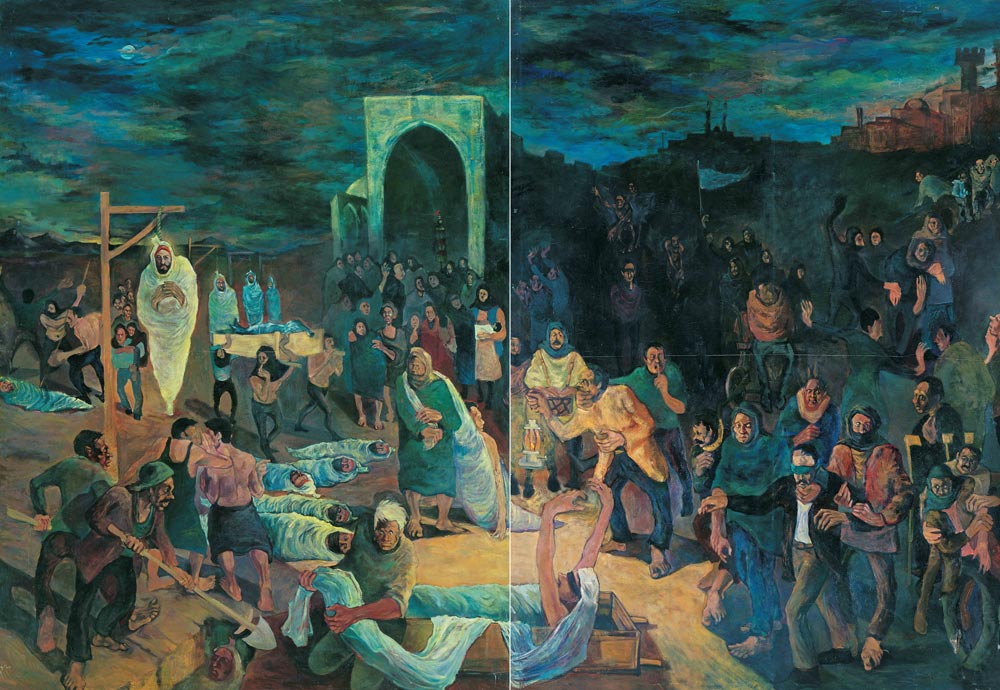
Fayzieh / Habibollah Sadeghi, Oil on Canvas, 1977 (1356 SH)
Some Types of Painting in Iran
Apart from the historical classification of Iranian painting discussed earlier, there are several important types of painting in Iran that deserve separate attention due to their significance. Among these, one can mention school painting, coffeehouse painting, and the Saqakhaneh movement. Below is a brief description of each:
School Painting
Iranian painting, having evolved from courtly portraiture, entered the realm of formal school education in the late Qajar period. The pioneers of this type of instruction were Abul-Hasan Ghaffari (Sani‘ al-Molk) and Mohammad Ghaffari (Kamal al-Molk). Through their travels to European countries such as Italy and France, they learned precise representation techniques, naturalism, and the use of oil paints. Upon returning to Iran, they established their own art schools over the course of five decades, teaching young students based on the methods of European art academies and passing on their artistic knowledge and discoveries.
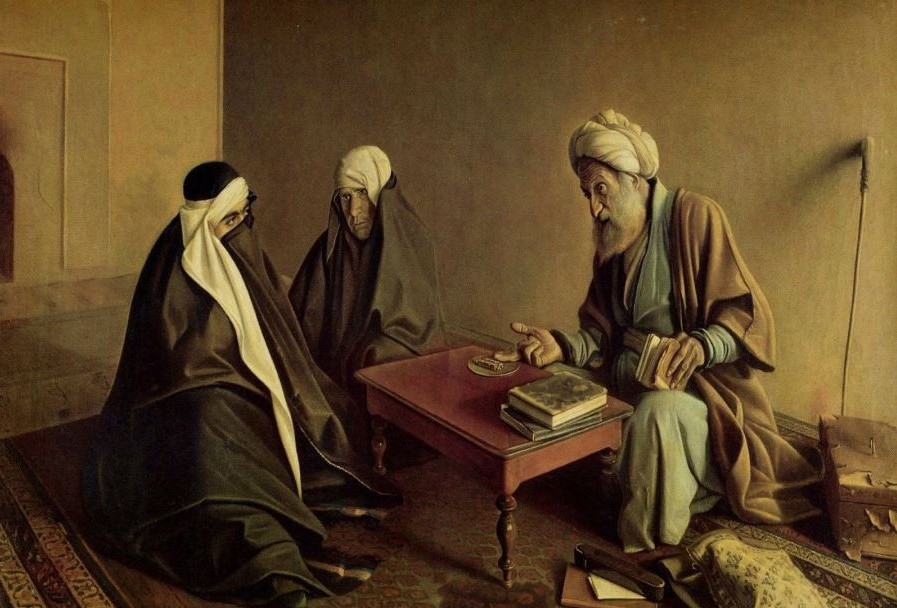
The Baghdadi Fortune Teller / Oil on Canvas, by Kamal-ol-Molk, 1277 SH
Qahvehkhaneh Painting (Coffeehouse Painting)
Qahvehkhaneh painting is one of the important, informal, and Popular forms of painting in Iran that emerged alongside the Constitutional Revolution. Pioneers of this style lacked formal or academic training; they learned painting experientially and used their art to entertain ordinary people. The subjects of Qahvehkhaneh paintings were national, religious, ethnic, and epic narratives. These works were typically executed in oil on canvas (large white painted curtains) and told stories visually. The primary purpose of Qahvehkhaneh painting was to connect with the general public and evoke emotional responses. Since these artists emerged from the people themselves, they often prioritized public beliefs and cultural perceptions over strict adherence to the original story. At times, a single theme appeared on a canvas, while at other times, multiple themes were depicted. Common sources included Ferdowsi’s Shahnameh, scenes from the events of Karbala, and Nizami’s Khamseh. Notable figures in the field of Iranian Qahvehkhaneh painting include Hossein Qollar Aghasi and Mohammad Modabber.
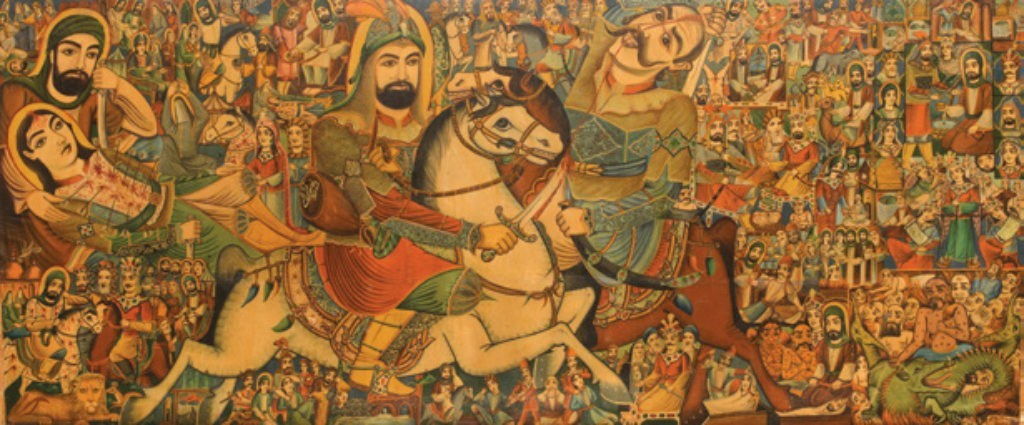
Saqakhaneh Movement
During Iran’s transition to the modern era, its painting scene underwent diverse experiments, reflecting influences from many modern art movements worldwide. Among these, the most indigenous movement that emerged in Iranian painting was the Saqakhaneh movement. This movement merged traditional and decorative Iranian motifs with modern painting techniques. Artists of the Saqakhaneh movement drew upon several key elements to “Iranianize” their works: unreadable forms of Persian calligraphy ( painterly calligraphy), motifs from ancient Iran, and familiar everyday symbols such as talismans, astrolabes, and beads ( manjuq ). Prominent artists of the Saqakhaneh movement include Hossein Zenderoudi, Parviz Tanavoli, Sadegh Tabrizi, Masoud Arabshahi, Faramarz Pilaram, Mansour Qandriz, Nasser Oveissi, and Jazeh Tabatabai.
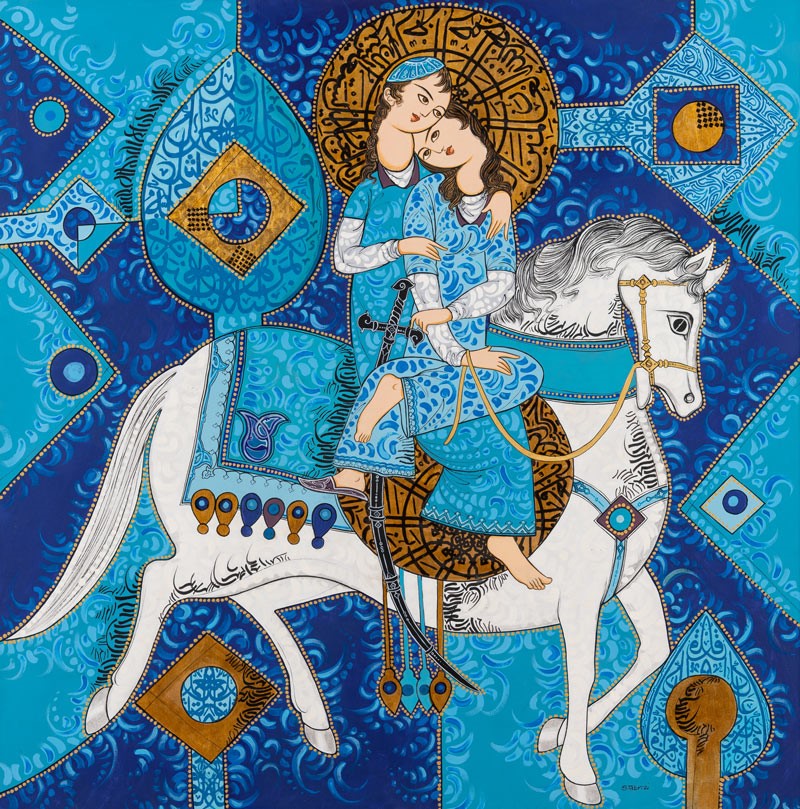
Del-dadeh / by Sadegh Tabrizi, mixed media on canvas, 1380s SH (2001–2010 CE)
[1] This exhibition was held on April 9, 1979.
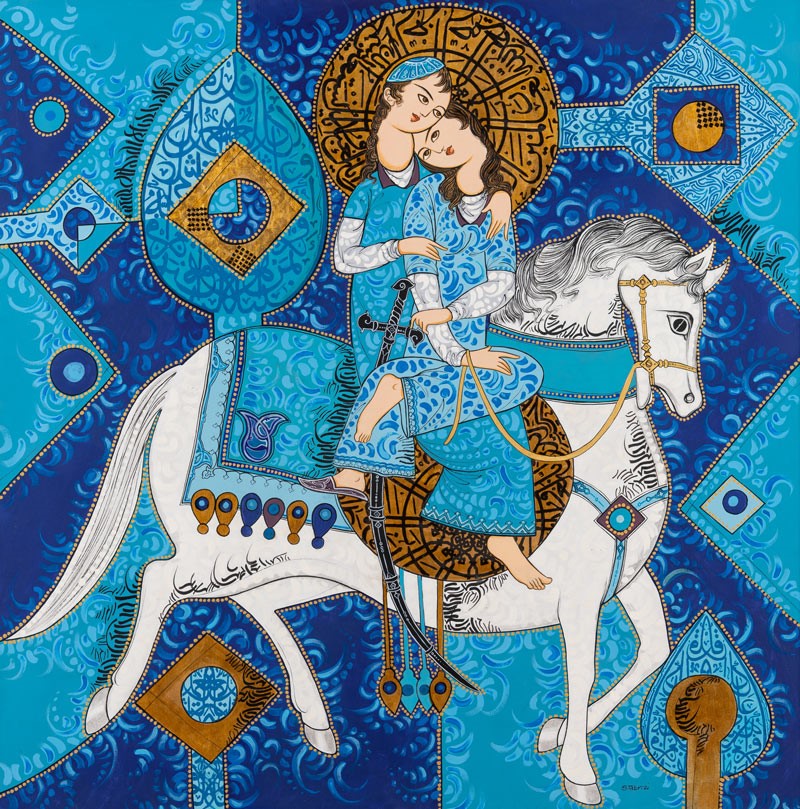









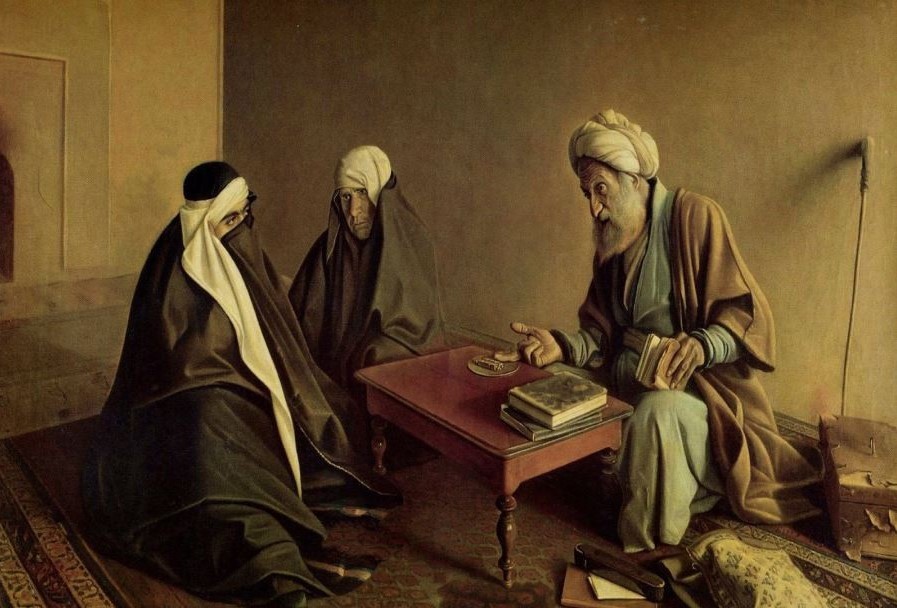
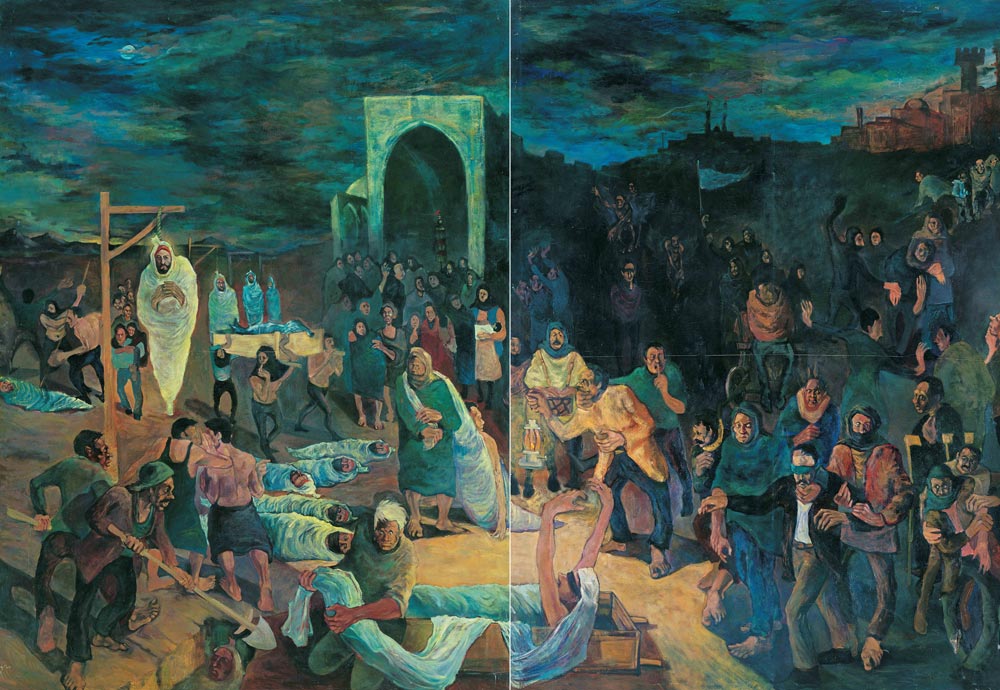
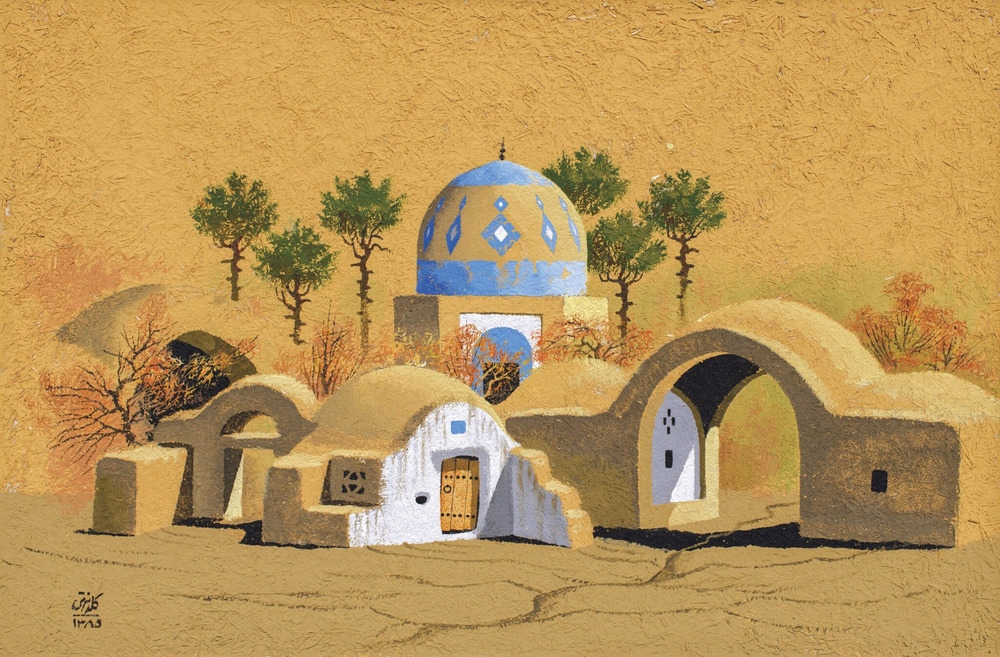
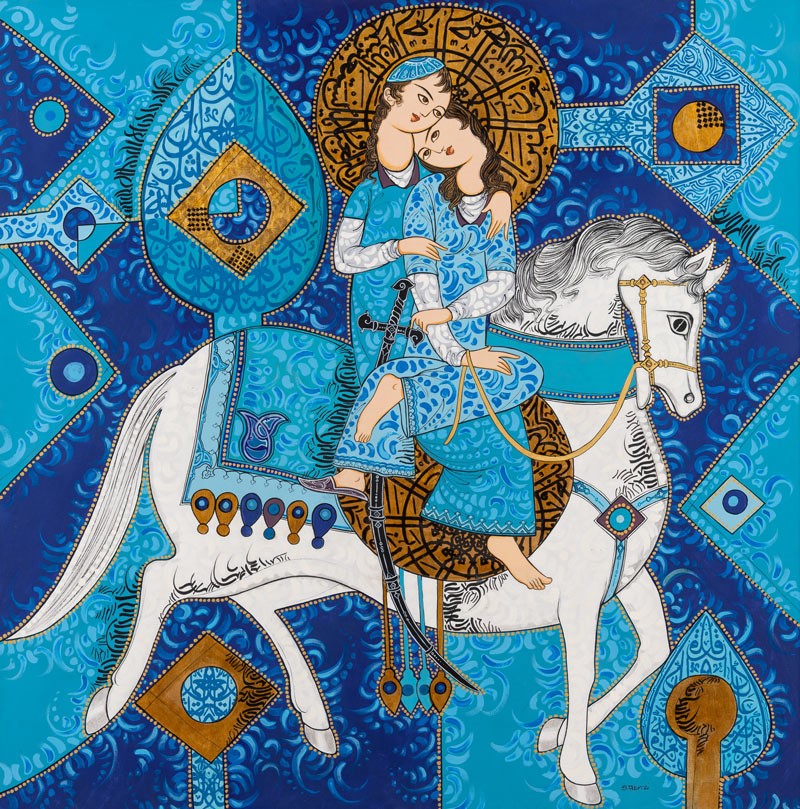
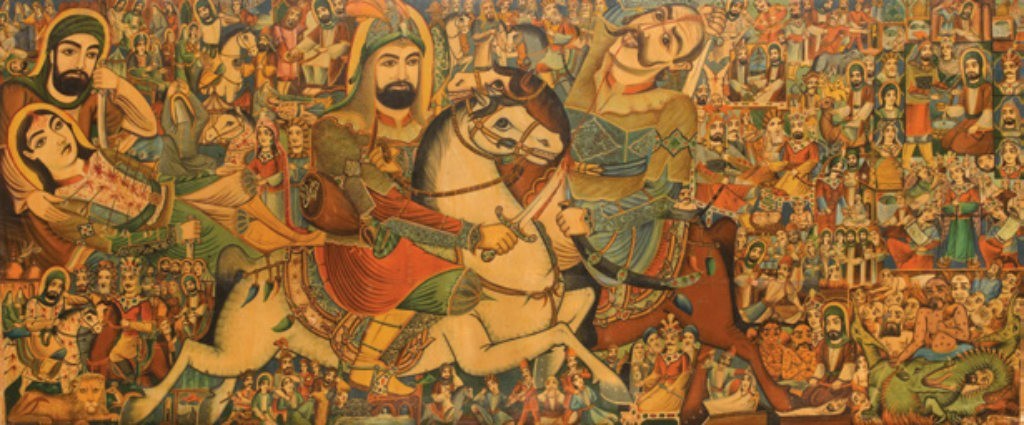
(7)_1_1.jpg)
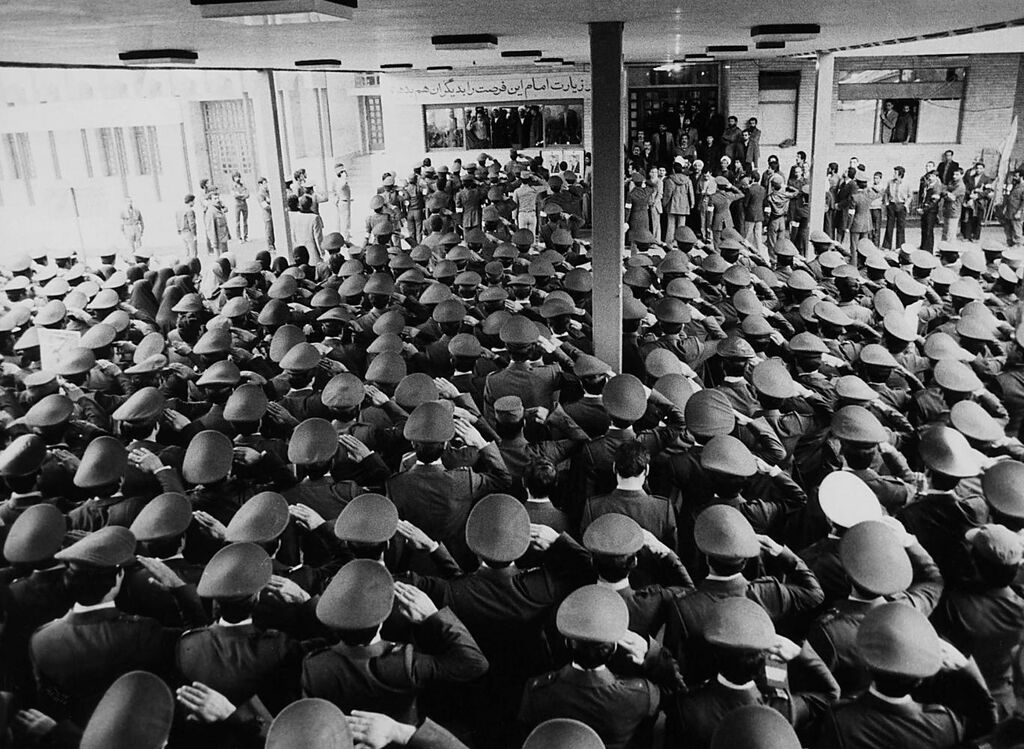
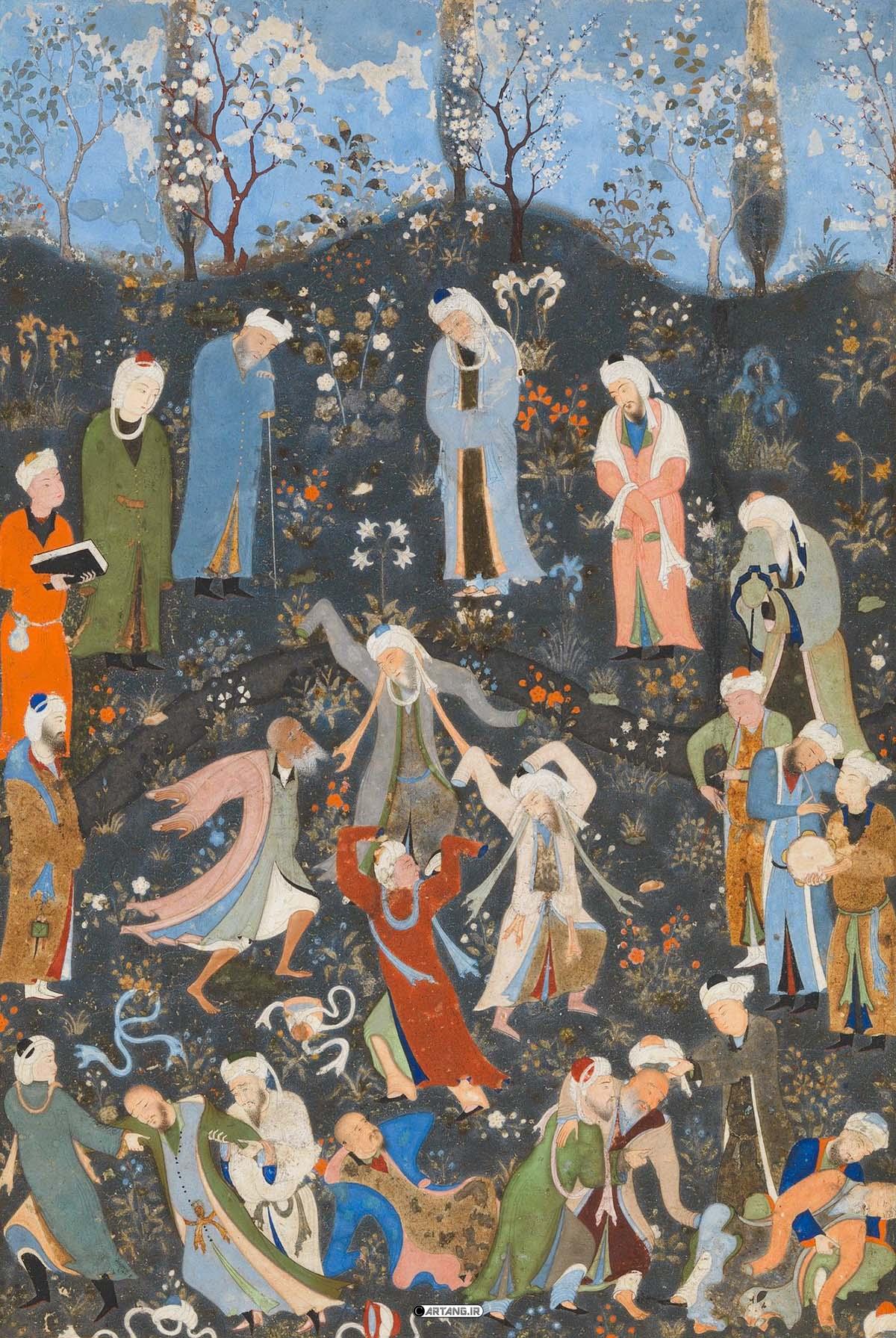
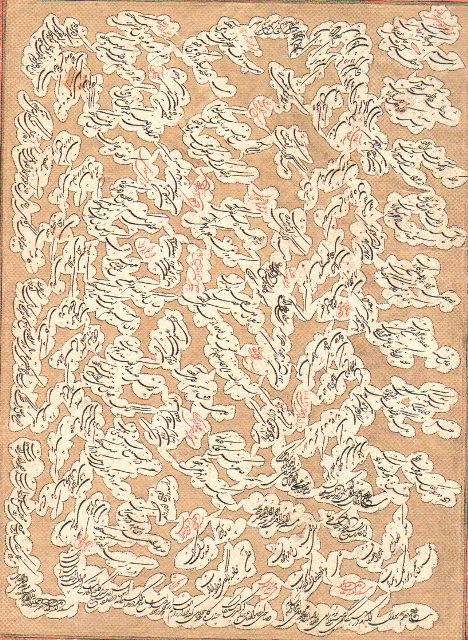
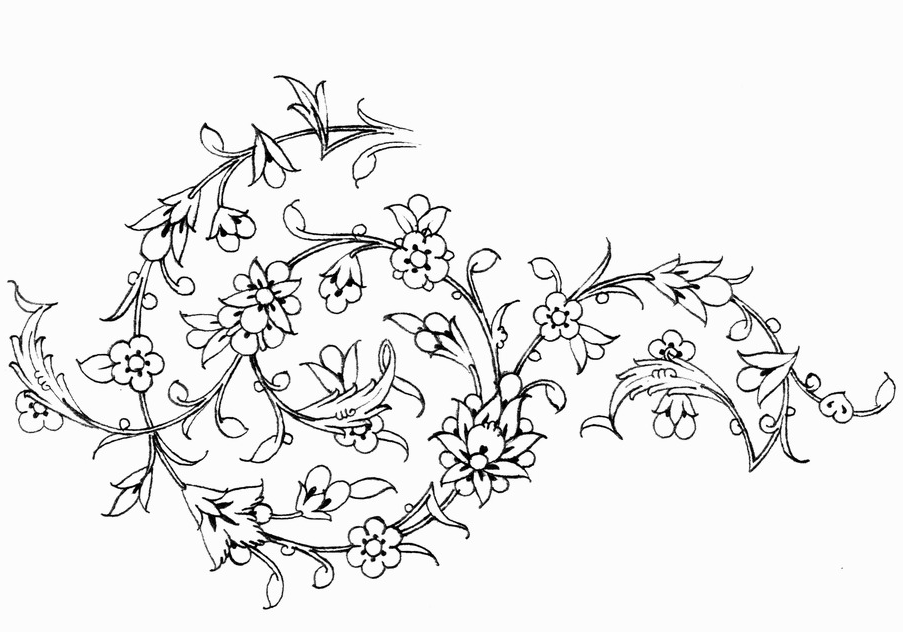
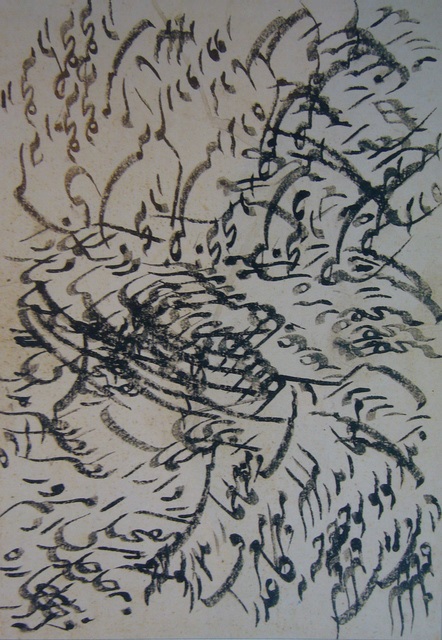
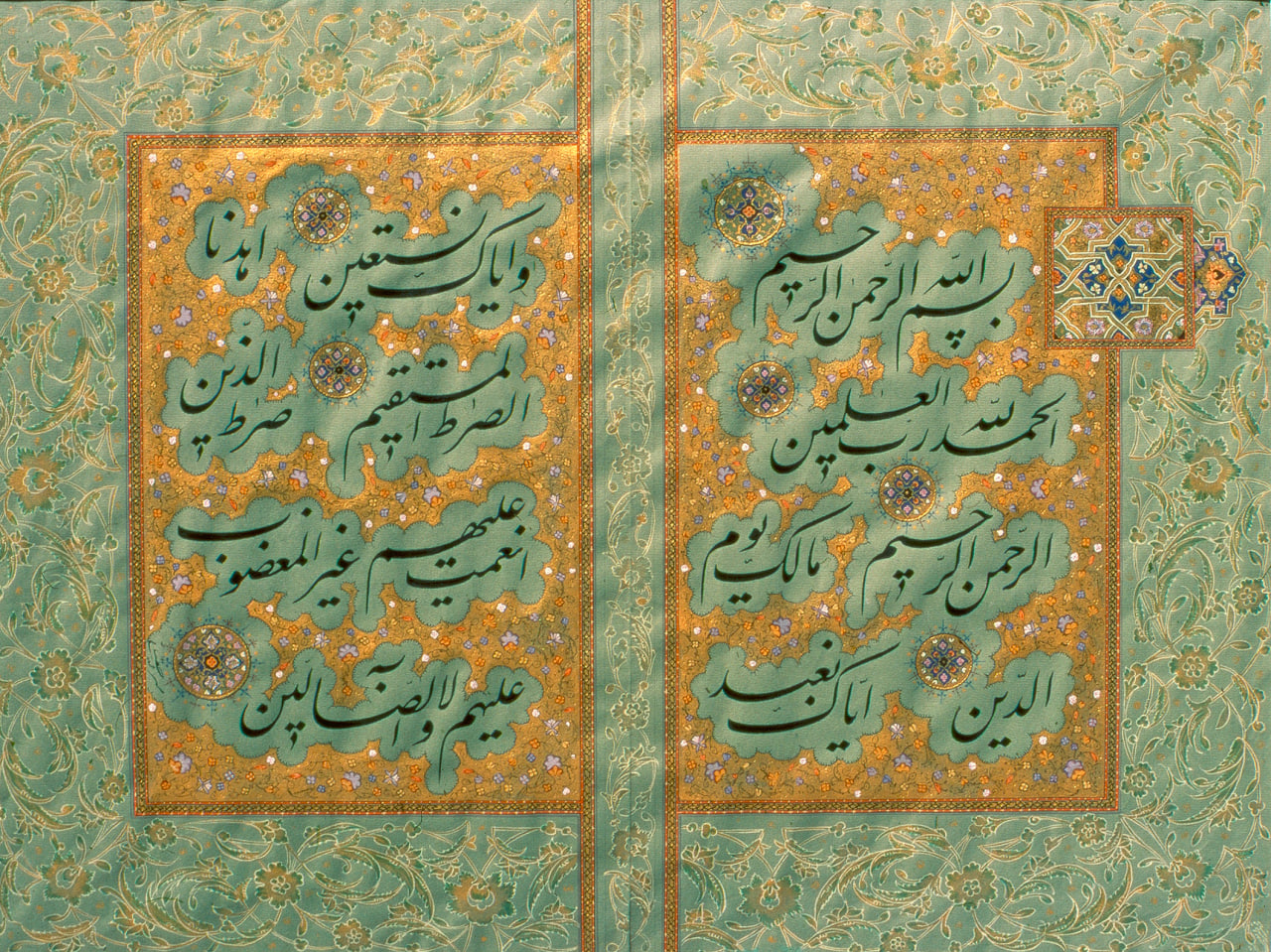

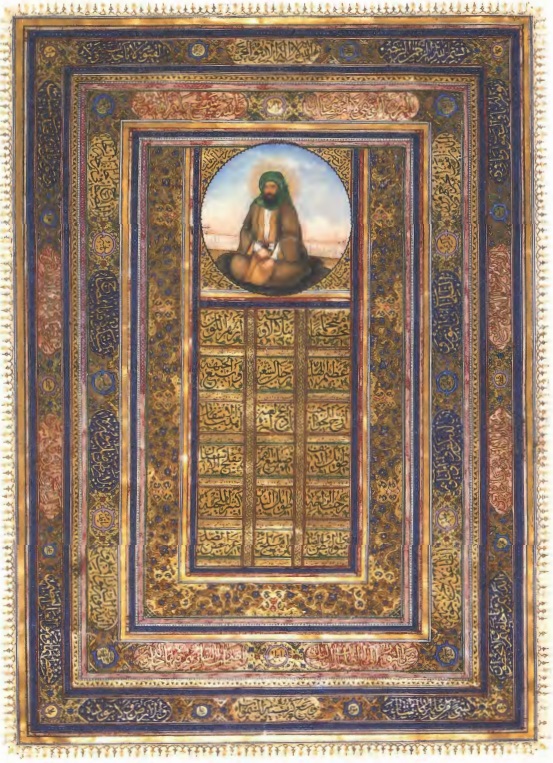
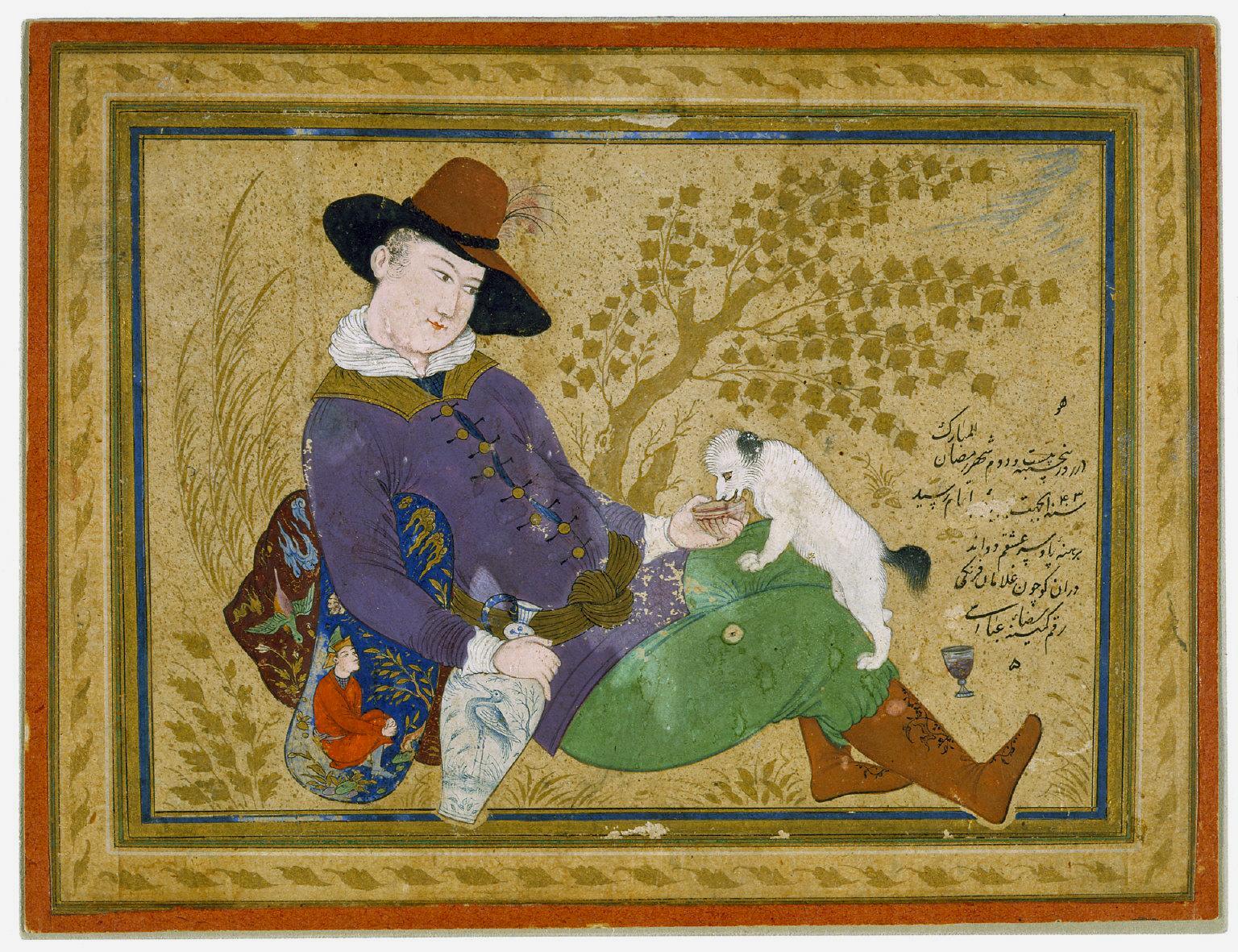
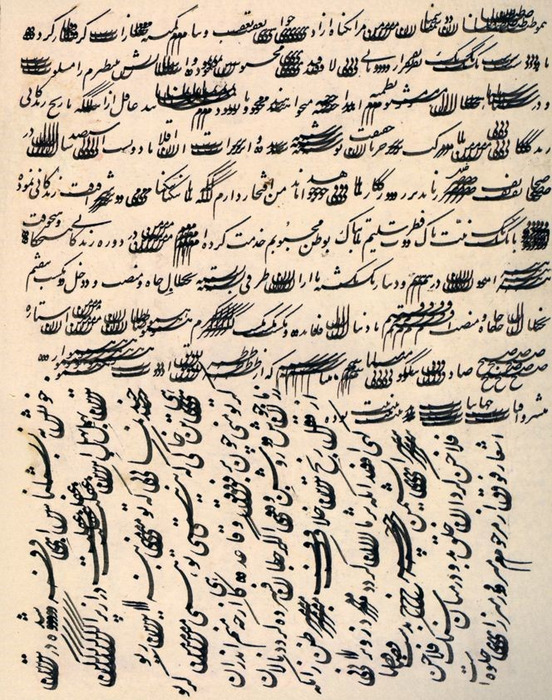
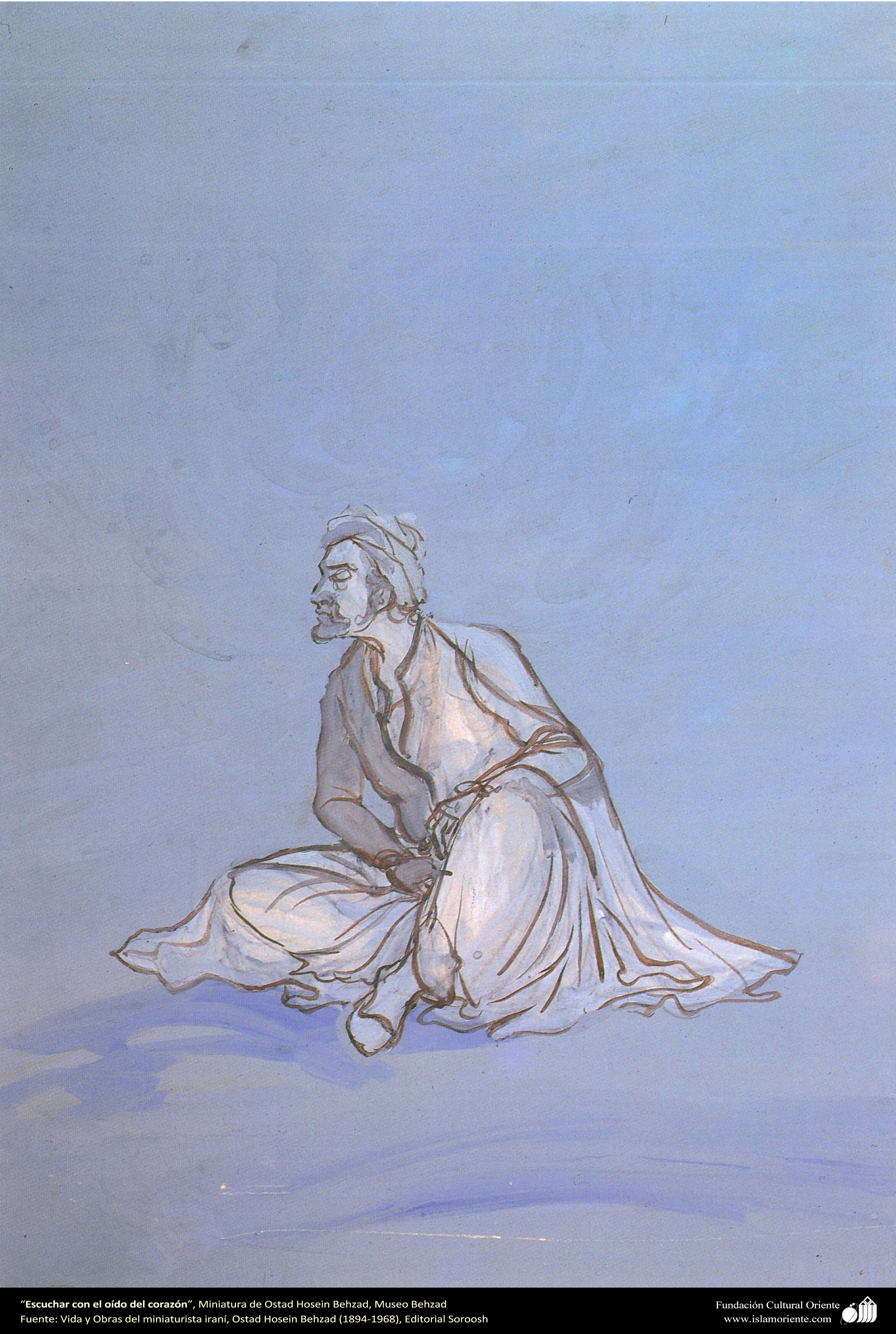
.jpg)